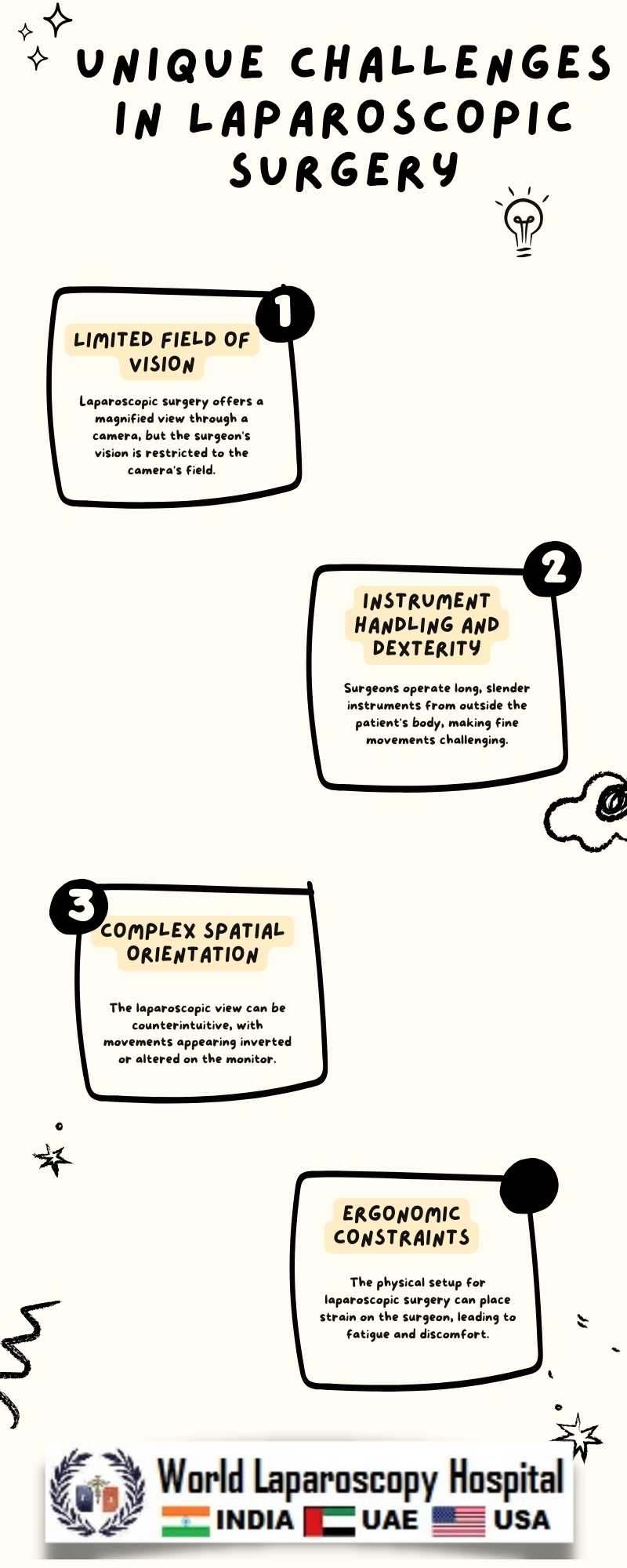
One of the primary challenges in laparoscopic surgery is the limited field of vision. Unlike open surgery, where the surgeon has a direct and broad view of the surgical site, laparoscopy relies on a camera to provide visual feedback. This constraint can make it difficult to navigate and manipulate tissues, especially in complex cases or when unexpected complications arise. For instance, in a case involving extensive adhesions due to previous surgeries, the surgeon must carefully dissect the scar tissue without harming adjacent structures, relying solely on the video feed.
Another significant challenge is the reliance on specialized instruments. Laparoscopic tools are designed to be slender and long to fit through small incisions, but this design can also make them less intuitive to use. The fulcrum effect, where movements of the instrument's handle result in the opposite movement at the tip, requires a high degree of hand-eye coordination and spatial awareness. In a reported case of laparoscopic cholecystectomy, the surgeon had to navigate around the delicate structures of the biliary tree with these instruments, a task that demands precision and dexterity.
The loss of tactile feedback is also a notable challenge in laparoscopic surgery. Surgeons must rely on visual cues to judge the force applied to tissues, which can increase the risk of accidental injury. For example, in a case involving laparoscopic hernia repair, the surgeon had to place mesh and secure it with sutures or tacks without being able to feel the tension directly. This required a delicate balance between securing the mesh firmly enough to prevent recurrence and avoiding excessive force that could cause pain or damage.
Patient-specific factors can further complicate laparoscopic procedures. Obesity, previous abdominal surgeries, and anatomical variations can all pose additional challenges. A case involving a laparoscopic colectomy in an obese patient highlighted the difficulties in maneuvering instruments and maintaining an adequate visual field. The increased abdominal fat and enlarged organs required the surgeon to adapt their technique, such as by using longer instruments and adjusting trocar placement, to successfully complete the procedure.
Finally, the learning curve associated with laparoscopic surgery is steep. Surgeons must undergo extensive training to develop the necessary skills, and even experienced surgeons can find certain cases challenging. Continuous education and practice, as well as the adoption of simulators and other training tools, are essential to mastering laparoscopic techniques.
Conclusion
While laparoscopic surgery offers many advantages, it also presents unique challenges that require careful navigation. From limited visibility and specialized instruments to the absence of tactile feedback and patient-specific factors, surgeons must overcome a variety of obstacles. The case report discussed herein underscores the importance of skill, experience, and adaptability in laparoscopic surgery, highlighting the ongoing need for innovation and education in this dynamic field of medicine.